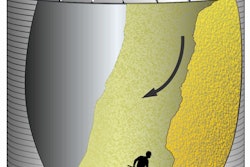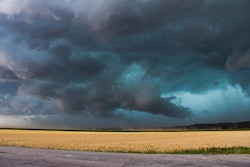
Corn traders have been back and forth for a month now on whether the weather forecasts are threatening to the US crop, but potentially damaging hot temperatures have been absent since mid-June. The forecast for the next two weeks is largely devoid of heat but is also lacking rainfall, which is not viewed favorably by the market as many areas of the Corn Belt have had below-normal precip in recent weeks. Most of the US Corn Belt has not dealt with unseasonable heat since the first half of June and notably cooler temps have prevailed ever since. Weather forecasts as of Wednesday call for the continuation of average-to-cooler conditions for the next two weeks; but without abundant rainfall.
The situation in the Dakotas is different, though, as farmers there are dealing with a significant drought that has been laced with frequent bouts of extreme heat. And unfortunately, considerable relief may not be on its way anytime soon. Moisture stress focuses on 20-25% of corn; heat mainly limited to Plains. Limited showers and frequent 90s/100s (including yesterday) stress at least ⅔ of N Plains spring wheat in the next two weeks.
USDA is reporting 4.72 MT of US Soybeans were crushed in May; which calculates to 157.25 million bushels. The following is crop progress reporting:
US Corn; 68% good-to-excellent vs 67% a week ago
US Soybean; 64% good-to-excellent vs 66% a week ago
US Spring Wheat; 37% good-to-excellent vs 40% a week ago
US Winter Wheat; 48% good-to-excellent vs 49% a week ago
US Corn; 10% silking vs 4% a week ago
US Spring Wheat; 59% headed vs 36% a week ago
The dollar’s bounce stalled on Thursday after the US Federal Reserve’s policy minutes failed to provide a clear picture of futures interest rate increases, although investors were reluctant to add bearish bets before some key US data. Federal Reserve policymakers were increasingly split on the outlook for inflation and how it might affect the future pace of interest rate rises.
The risk of trading futures, hedging, and speculating can be substantial. Grain Hedge is a Branch of Foremost Trading LLC (NFA ID: 0307930)














